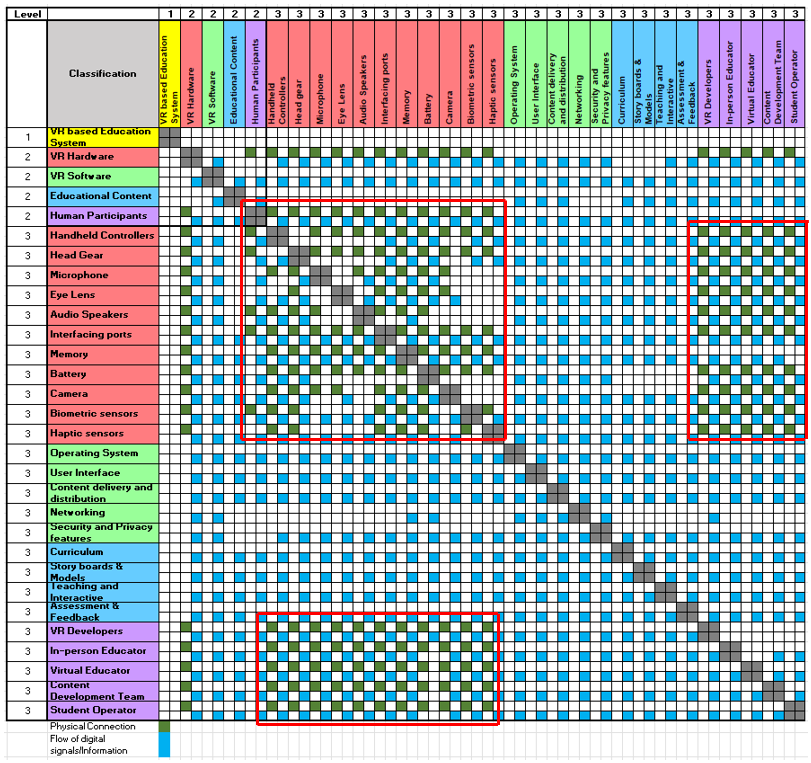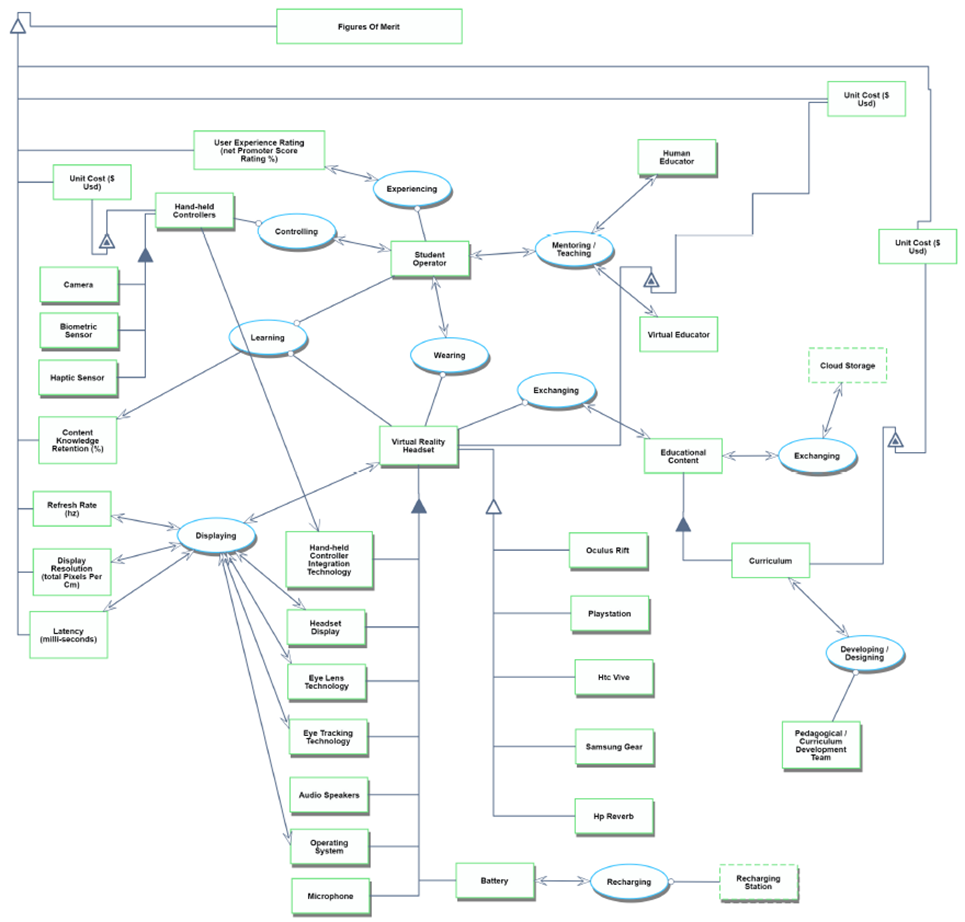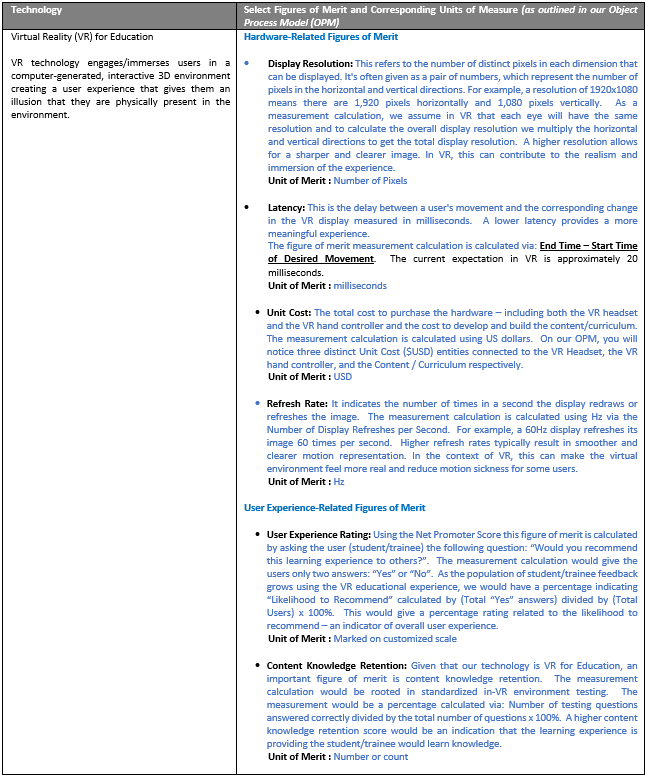Difference between revisions of "VREducation"
| Line 1: | Line 1: | ||
= | =Project Overview= | ||
Virtual Reality (VR) in education offers an immersive, interactive, and engaging environment, revolutionizing traditional education and teaching methods. By simulating real-world experiences, VR promotes experiential learning, allowing students to visualize complex concepts, explore inaccessible locales, and engage in realistic scenarios. | Virtual Reality (VR) in education offers an immersive, interactive, and engaging environment, revolutionizing traditional education and teaching methods. By simulating real-world experiences, VR promotes experiential learning, allowing students to visualize complex concepts, explore inaccessible locales, and engage in realistic scenarios. | ||
VR technology fosters better comprehension, retention, and enthusiasm for subjects ranging from history to science to training in skilled labour industries and beyond. In classrooms, VR can transport students to ancient civilizations, distant planets, or even inside human cells. For skills training, such as medical or technical fields, VR provides safe, repeatable environments for practice, reducing risks and resource costs. Moreover, VR caters to diverse learning styles, accommodating visual, auditory, and kinesthetic learners. | VR technology fosters better comprehension, retention, and enthusiasm for subjects ranging from history to science to training in skilled labour industries and beyond. In classrooms, VR can transport students to ancient civilizations, distant planets, or even inside human cells. For skills training, such as medical or technical fields, VR provides safe, repeatable environments for practice, reducing risks and resource costs. Moreover, VR caters to diverse learning styles, accommodating visual, auditory, and kinesthetic learners. | ||
| Line 14: | Line 13: | ||
*VR Hardware / Computer Systems. The quality, cost, and user experience with the VR hardware and supporting computer systems will be integral to the success of our VR for Education technology development and deployment. Significant investments and progress has been made and continue to position VR to transform the global education market. | *VR Hardware / Computer Systems. The quality, cost, and user experience with the VR hardware and supporting computer systems will be integral to the success of our VR for Education technology development and deployment. Significant investments and progress has been made and continue to position VR to transform the global education market. | ||
=DSM Allocation= | |||
[[File:DSM_VREducation.png]] | [[File:DSM_VREducation.png]] | ||
=Roadmap Model using Object Process Methodology(OPM)= | |||
[[File:OPD_VREducation.png]] | [[File:OPD_VREducation.png]] | ||
=Figures of Merit= | |||
[[File:FOM_VREducation.png]] | [[File:FOM_VREducation.png]] | ||
=Alignment with Company Strategic Drivers : FOM Targets= | |||
=Positioning of Company Vs. Competition : FOM charts= | |||
=Technical Model : Morphological Matrix and Tradespace= | |||
=Key Publication and Patents= | =Key Publication and Patents= | ||
Revision as of 00:52, 22 October 2023
Project Overview
Virtual Reality (VR) in education offers an immersive, interactive, and engaging environment, revolutionizing traditional education and teaching methods. By simulating real-world experiences, VR promotes experiential learning, allowing students to visualize complex concepts, explore inaccessible locales, and engage in realistic scenarios. VR technology fosters better comprehension, retention, and enthusiasm for subjects ranging from history to science to training in skilled labour industries and beyond. In classrooms, VR can transport students to ancient civilizations, distant planets, or even inside human cells. For skills training, such as medical or technical fields, VR provides safe, repeatable environments for practice, reducing risks and resource costs. Moreover, VR caters to diverse learning styles, accommodating visual, auditory, and kinesthetic learners. With the potential for global virtual classrooms, students from varied geographies and backgrounds can interact, democratizing education access. While challenges remain, including technological equity and motion sickness, the transformative potential of VR in education is undeniable.
Our technology roadmap identifies the importance of the integration between hardware technical capabilities – including the VR headset and hand-held devices – along with the educational content and curriculum. Getting both “right” is integral to the future utilization and success of using VR as an immersive learning tool. Our roadmap demonstrates that VR for education is still in the “Rapid Progress” phase of the traditional “S Curve” and countless additional / supplementary innovations are still forthcoming such as utilizing AI for bespoke / custom learning opportunities for students / trainees around the world. Our technology roadmap lives at the epicenter of three key aspects as outlined in Figure I below. This graphical representation integrates well with the Mixed Reality technology roadmap outlined in (https://roadmaps.mit.edu/index.php/Mixed_Reality_(Augmented_%26_Virtual)#Roadmap_Overview). The key difference is the extended and deliberate engagement of educational content and curriculum into our roadmap.
- Human Operator. This includes both the trainee and the instructor that may (or may not) be involved in the training and educational experience. Some of the hands-on technical training using VR may still leverage the opportunity for an in-person instructor such as training in hazardous situations or medical environments.
- Content / Curriculum and Learning Environment. Student / trainee educational outcomes are rooted in the development and deployment of the “right” educational content and curriculum in the VR immersive experience.
- VR Hardware / Computer Systems. The quality, cost, and user experience with the VR hardware and supporting computer systems will be integral to the success of our VR for Education technology development and deployment. Significant investments and progress has been made and continue to position VR to transform the global education market.
DSM Allocation
Roadmap Model using Object Process Methodology(OPM)
Figures of Merit
Alignment with Company Strategic Drivers : FOM Targets
Positioning of Company Vs. Competition : FOM charts
Technical Model : Morphological Matrix and Tradespace
Key Publication and Patents
[1] Marougkas, A.; Troussas, C.; Krouska, A.; Sgouropoulou, C. Virtual Reality in Education: A Review of Learning Theories, Approaches and Methodologies for the Last Decade. Electronics 2023, 12, 2832. https://doi.org/10.3390/electronics12132832
[2] Noble, S.M., Saville, J.D. & Foster, L.L. VR as a choice: what drives learners’ technology acceptance?. Int J Educ Technol High Educ 19, 6 (2022). https://doi.org/10.1186/s41239-021-00310-w
[3] Helsel, Sandra. “Virtual Reality and Education.” Educational Technology, vol. 32, no. 5, 1992, pp. 38–42. JSTOR, http://www.jstor.org/stable/44425644. Accessed 22 Oct. 2023.
[4] Cochrane, Thomas. "Mobile VR in Education: From the Fringe to the Mainstream." IJMBL vol.8, no.4 2016: pp.44-60. http://doi.org/10.4018/IJMBL.2016100104
[5] Y. Slavova and M. Mu, "A Comparative Study of the Learning Outcomes and Experience of VR in Education," 2018 IEEE Conference on Virtual Reality and 3D User Interfaces (VR), Tuebingen/Reutlingen, Germany, 2018, pp. 685-686, doi: 10.1109/VR.2018.8446486.
[6] Rojas-Sánchez, M.A., Palos-Sánchez, P.R. & Folgado-Fernández, J.A. Systematic literature review and bibliometric analysis on virtual reality and education. Educ Inf Technol 28, 155–192 (2023). https://doi.org/10.1007/s10639-022-11167-5
[7] Kuna, P.; Hašková, A.; Borza, Ľ. Creation of Virtual Reality for Education Purposes. Sustainability 2023, 15, 7153. https://doi.org/10.3390/su15097153
[8] Burov, O.Y. and Pinchuk, O.P., 2023. A meta-analysis of the most influential factors of the virtual reality in education for the health and efficiency of students’ activity. Educational Technology Quarterly [Online], 2023(1), pp.58–68. Available from: https://doi.org/10.55056/etq.435 [Accessed 22 October 2023].


